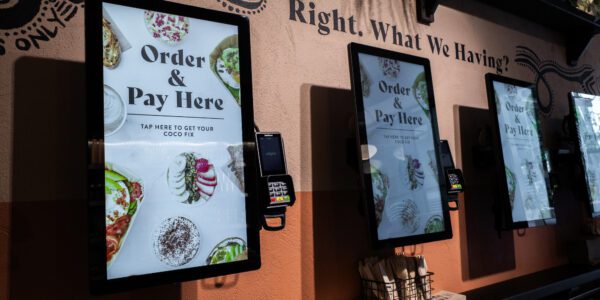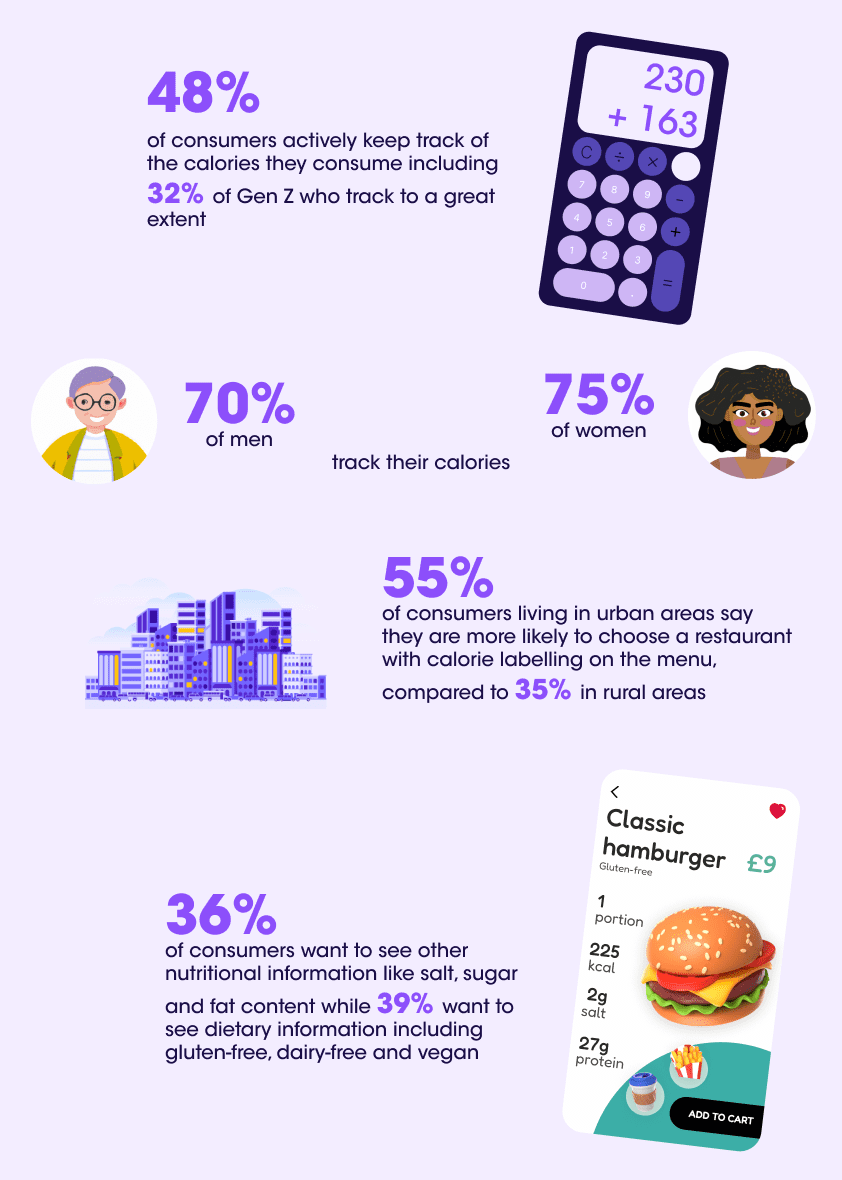7 incredible benefits of using self service kiosks in your restaurant
Self serve kiosks aren’t just for McDonalds any more. Discover the financial and operational benefits of kiosks and why they might be right for your restaurant.

New research shows Calorie Labelling Regulation, is likely to influence a significant number of consumer food decisions. 43% of consumers said they’d be more likely to choose a restaurant with calorie labelling on the menu.
On 6th April 2022, calorie labelling on menus became mandatory for operators in England with more than 250 employees. Operators must provide calorie counts for individual menu items and display the statement ‘adults need around 2000 kcal a day’. The law is part of a wider government strategy to tackle obesity and promote healthy eating.
Vita Mojo commissioned a UK-wide consumer survey to better understand how much consumers care about calorie information. Here, we explore the results and what it means for the industry.
Despite criticism from both the industry and eating disorder campaigners and charities, the trend for transparency is being driven by consumers, with 68% believing the legislation is a good move. While the government is focused on public health, consumers do want greater transparency from the brands they buy from – 57% said calorie counts would impact their food orders, while 43% said they’d be more likely to choose a restaurant with calorie labelling on the menu.
The trend for transparency is not a new fad, it’s been growing for a long time. For more than a decade now, legislation has been in force in America. As we evolve globally, operators need to adapt and acknowledge this goes beyond legislation.

The survey highlighted that by making nutritional information readily available, you can empower your customers to make the right choices for their needs. You could also see loyalty and satisfaction increase as a result.
Arguably the trend towards transparency is only going to accelerate with the introduction of Calorie Labelling Regulations. While it currently only applies to larger businesses, operators across the industry should be proactive as these changes affect consumer expectations. If large operators offer this information, it’s likely customers will come to expect it from smaller restaurants, cafes and takeaways. Operators that aren’t agile enough to act now, might run the risk of losing out. And that could affect your bottom line. Providing the information consumers want – irrespective of whether or not you need to – will set you apart from your competition.
With the legislation and consumer demand for transparency growing, now is a great opportunity to review your tech stack. In 2015, when we opened the first cashless QSRs in the UK, nutrition information was at the heart of our concept. However indulgent, calorie counts were clearly displayed at the point of sale for every item. This meant our customers could create delicious meals that met their individual preferences, goals or health needs. We built the Vita Mojo platform to make it as easy as possible to display calorie labelling and nutritional information digitally. Today, this functionality is used by operators like YO!, LEON and Tossed to take their customer experience to the next level.
Having a flexible digital ordering system can help you provide nutritional information without adding stacks of extra work for your staff:
Check out our calorie labelling features, or if you’d like more information about the legislation, get in touch to see how we can help you comply.
Self serve kiosks aren’t just for McDonalds any more. Discover the financial and operational benefits of kiosks and why they might be right for your restaurant.

Learn the benefits of centralising your hospitality data, and how easy-to-read, real-time reports will help you scale your business.

Innovating Hospitality: Lessons from the Retail Sector
